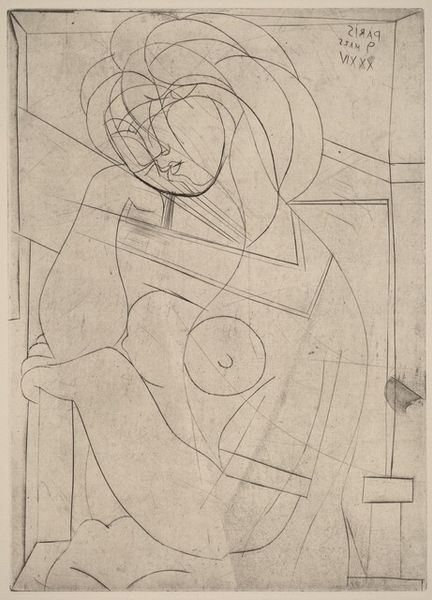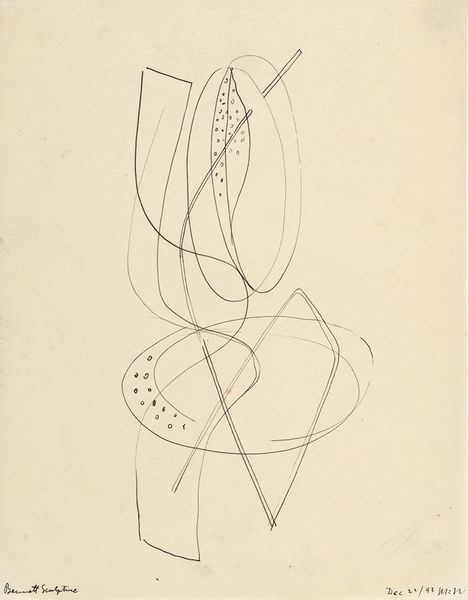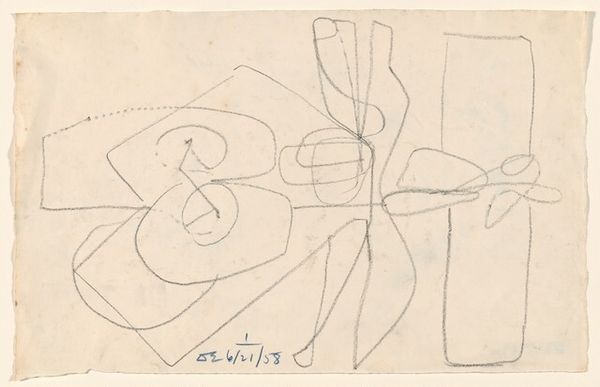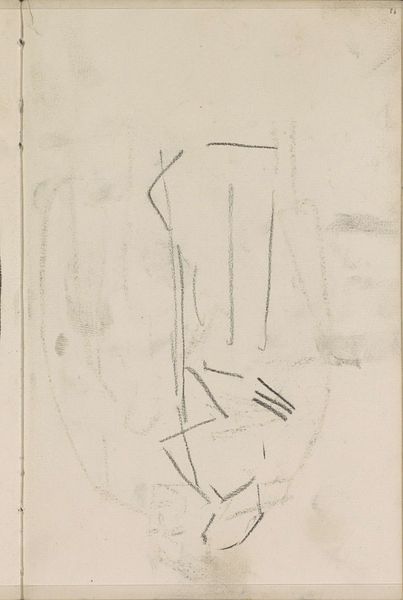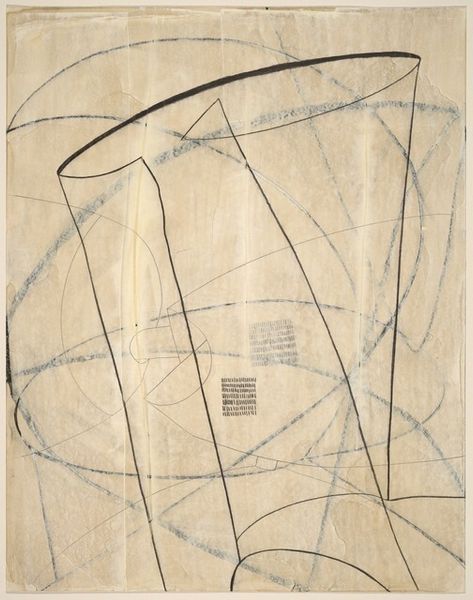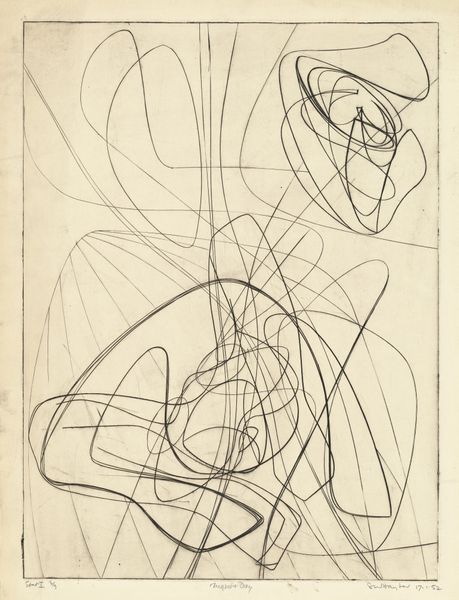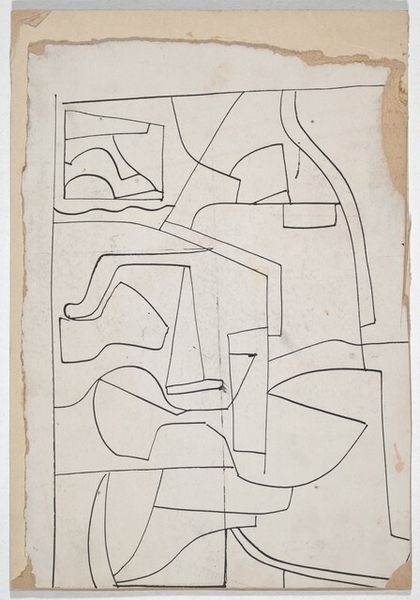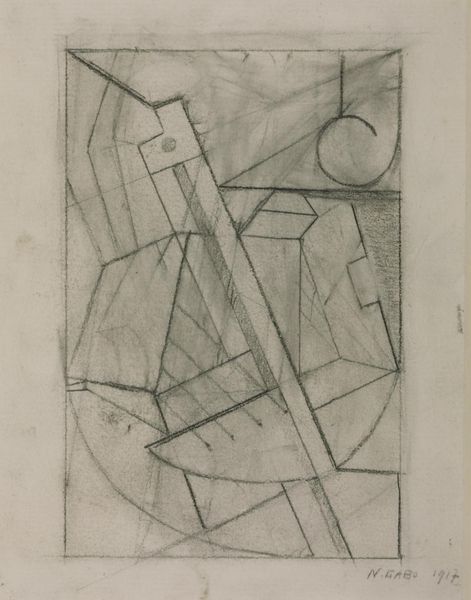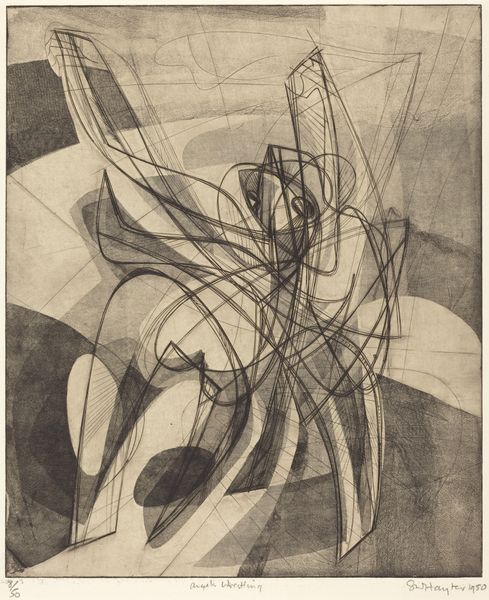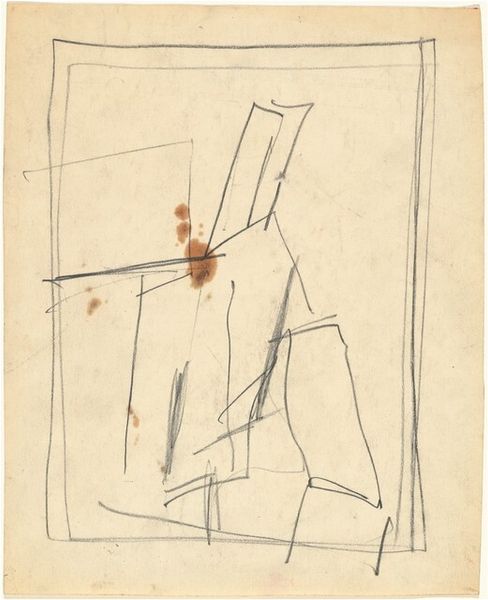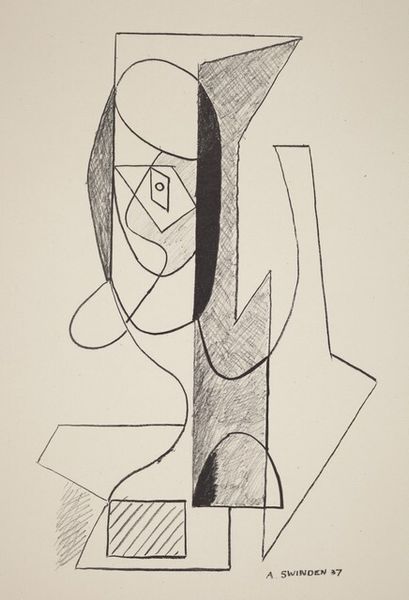
Dimensions: image: 302 x 187 mm
Copyright: © ADAGP, Paris and DACS, London 2014 | CC-BY-NC-ND 4.0 DEED, Photo: Tate
Curator: This is Stanley William Hayter's "Le Chas de l’aiguille," currently held in the Tate Collections. The image measures approximately 302 by 187 mm. Editor: My first impression is one of controlled chaos. The lines seem to dance, but there's a definite structure trying to emerge from the abstraction. Curator: Hayter was deeply engaged with Surrealism and automatism. This print exemplifies his innovative intaglio techniques, exploring the subconscious and the dynamics of line and form. The title translates to "The Eye of the Needle," suggesting themes of restriction and passage. Editor: Do you think the title connects to postwar anxieties? Is it a commentary on the limited opportunities or restricted freedoms individuals experienced during this period? Curator: Absolutely, given the historical context. Hayter's work often served as a response to societal constraints and existential inquiries, providing a visual language to express those tensions. Editor: Looking at it now, I wonder about the female form. Is that intentional? Curator: It could be argued that the ambiguous forms lend themselves to intersectional readings, touching on themes of gender and identity within shifting social landscapes. Editor: It's truly fascinating how a network of lines can provoke such layered interpretations. Curator: Indeed, Hayter's abstraction becomes a conduit for historical, social, and deeply personal reflections.
Comments
tate 8 months ago
⋮
http://www.tate.org.uk/art/artworks/hayter-le-chas-de-laiguille-p07028
Join the conversation
Join millions of artists and users on Artera today and experience the ultimate creative platform.
tate 8 months ago
⋮
Hayter's interest in the combination of chance and spontaneous creativity is conveyed in the titles of these two works: Hunt the Needle and Myth of Creation. An element of controlled design is also evident, particularly in Hunt the Needle where a woman's anatomical features clearly emerge from the tangled lines. The prints demonstrate the technical refinement that made Hayter one of the century's most innovative printmakers. His Paris workshop, Atelier 17, was a focus for Surrealist experimentation, and American artists drew upon his expertise when he established a workshop in New York in the 1940s. Gallery label, August 2004
